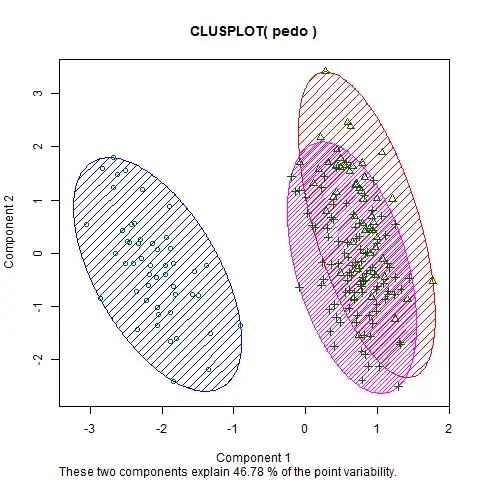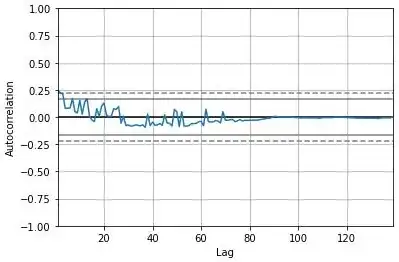as suggested in the following thread:
Period detection of a generic time series
I'm testing the function findfrequency() to automatize the estimation of the period in timeseries i do not know anything about beforehand. In one of my tests i ended up in a time series with the following values:
126 784 894 906 938 881 908 867 53 875 878 894 54 852 940 860 56 874 893 898 879 936 876 924 141 753 890 891 910 885 889 295 609 915 895 886 904 902 898 482 414 904 896 904 896 904 932 452 427 888 901 896 905 900 899 666 230 1800 1839 1799 1762 1823 33732 6721 6644 7179 6811 1440 5156 6562 46010 6930 6002 6122 6690 6238 6005 48725 43277 5481 37639 18 5816 6148 5377 5942 5510 1152 35 5909 6783 544 908 877 904 901 899 896 312 630 867 895 896 909 33300 123 6666 7168 6456 6353 2048 3683 6015 4727 878 915 20 469 433 877 887 893 906 894 906 410 484 47 896 33228 143 6052 6365 6160 5709 6962 5638 6966 5997
and by calling findfrequency() i get 111 as a period. However the points are in total 139, and therefore how can i have a period which is greater than half of the amount of datapoints of the timeseries?
From an eye evaluation it doesn't look like this series has any kind of periodicity i would have expected a 1 as result, am i missing something?
Also the acf function of the series doesn't show any significant maximum in the wave which should suggest no strong periodicity

